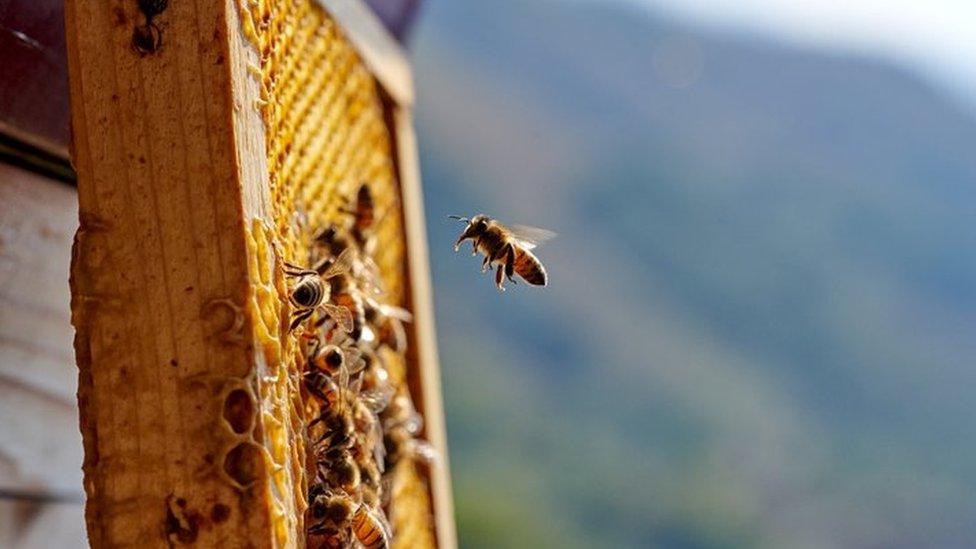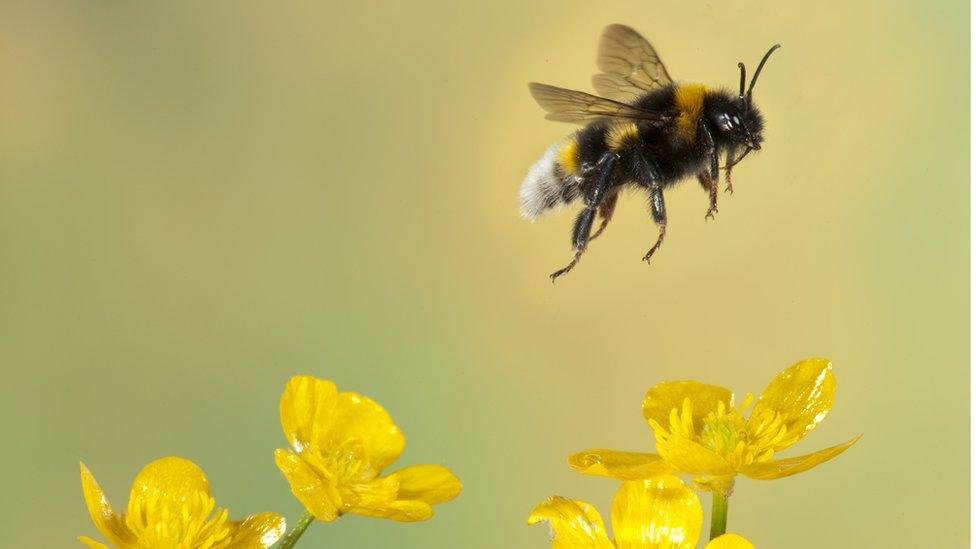New research reveals why bees are producing less honey in the US
- Published
- comments

Climate change and habitat loss are all having a big impact on the honey that's made in the US, according to new research.
According to the US government, in the past few years there's been a decline in honey production. This means less and less is being made each year.
The average colony or - bee group - is producing 0.5lb (226 grams) less honey a year compared to a decade ago.
So what is behind the decline in honey?
Bees, herbicides, climate change and habitat loss

Herbicides are sprayed onto plants
Gabriella Quinlan, scientist at Pennsylvania State University and co-author of the research, gives three main reasons for the drop in honey production.
Herbicides are chemicals used to stop certain plants from growing near other plants. For example, to kill certain weeds in areas where farmers are trying to grow veg. This might mean that certain flowers bees need to use to pollinate and feed, can't grow.
But bees don't just make honey, they play an important role in the environment, helping plants grow and produce seeds.
When you see bees flying around near flowers, they are usually pollinating.
Bees feed on nectar, which is made inside of flowers. Whilst they are feeding, the flower's pollen gets attached to them.
They then fly off to another flower, pollinating it by dropping the other flower's pollen onto it. This means the flower can make seeds, and grow more plants in the future.
Flowers have nectar for bees to eat, and bees pick up pollen to continue the plant population. They work together as a great team!
However, this means if there are fewer flowers, you're likely to get less bees. They will have less to feed on, and then also won't be able to produce as much honey.
Why are bees so important?
You might have also heard of pesticides - these are also mentioned in the study.
Pesticides are chemicals used to kill insects and stop them from eating farmers' crops. Because they are used to target pests, they can be damaging to other insects, like bees.
In the UK, there's around 468 pesticide substances that can be used. In the US, there's 692.
To use pesticides professionally - for example as a farmer - you need to get permission as they can be harmful to the environment.
How is climate change affecting bees and honey production?

Another issue highlighted in the report was climate change. Temperatures getting warmer, or just more extreme, make it harder for bees. They need the right, relatively stable conditions to be able to reproduce.
Because of pollination, bees also need lots of flowers around. If flowers are not growing because of the changing climate, it makes things harder for bees again.
Bees are also being affected by climate change in other ways. Last year, a report found that they're actually waking up earlier because of changing temperatures.
